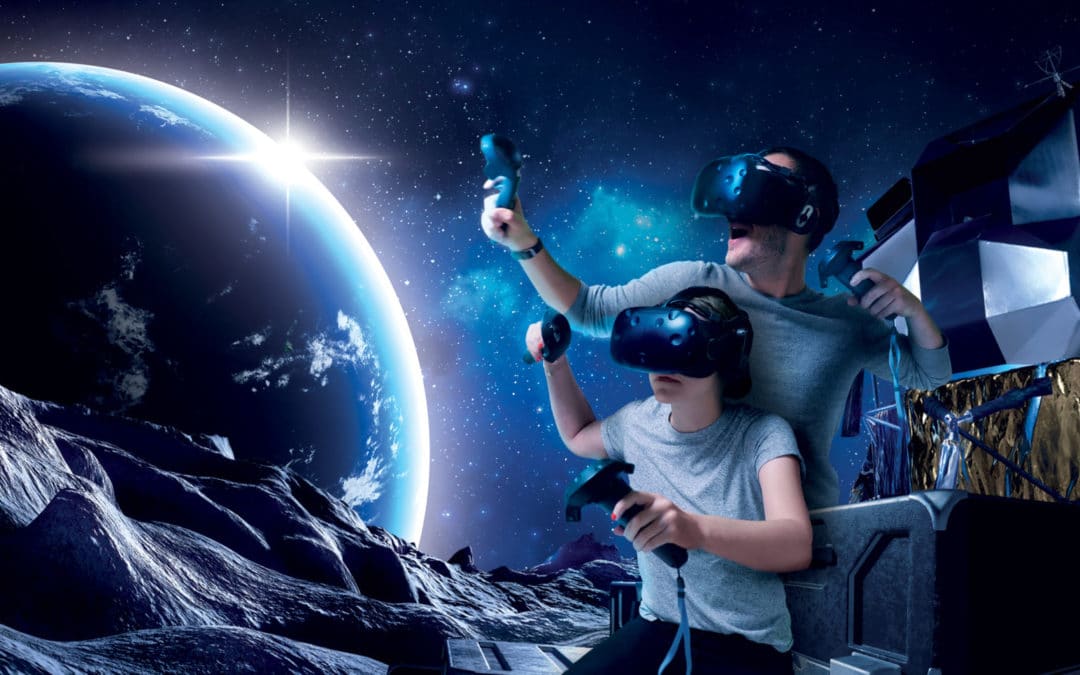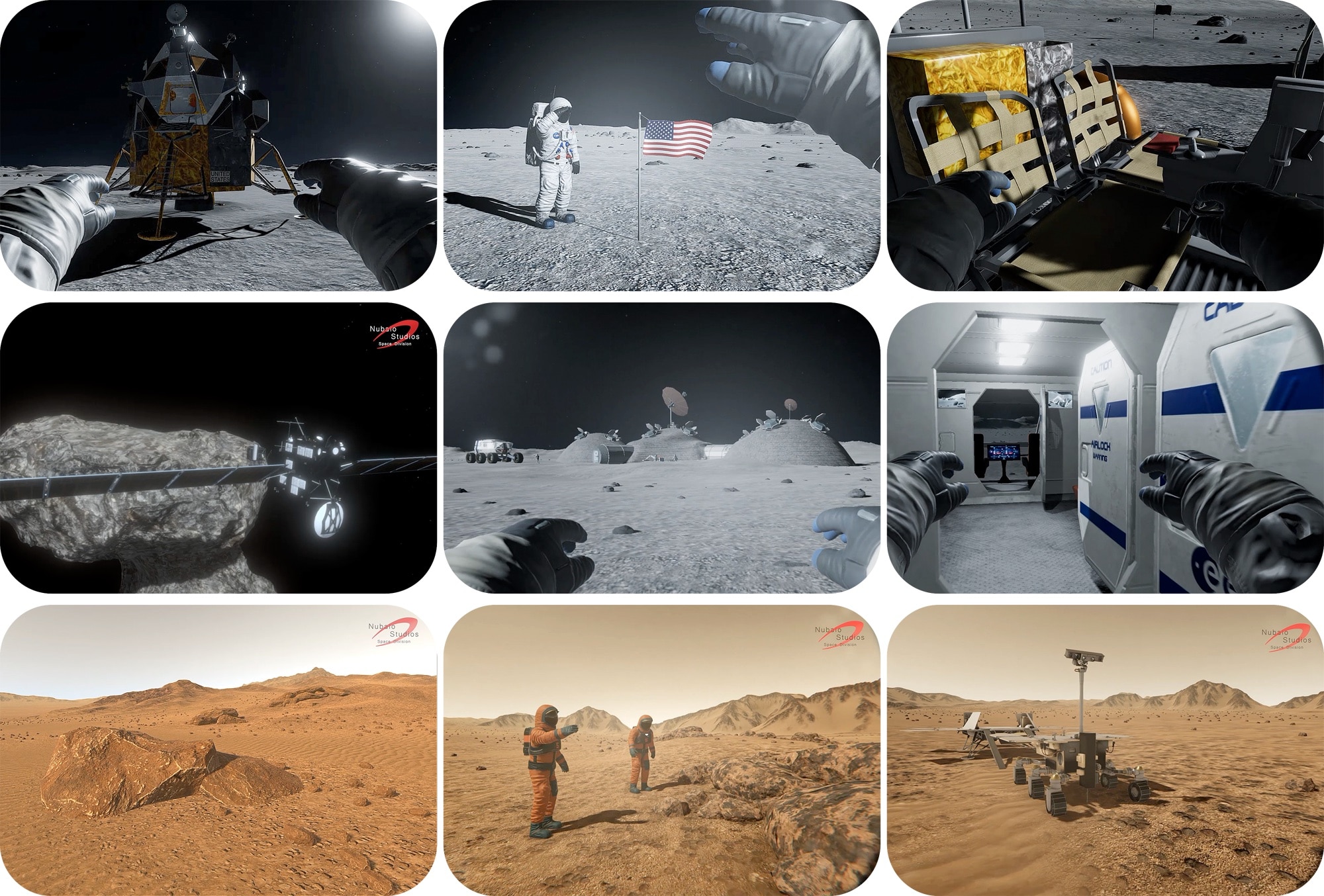At SpaceRobotics.EU we are ceaselessly ahead of the curve in Virtual Reality experiences, always offering state-of-the-art professional hardware and custom-made high-quality software. We ended 2019 with four top-selling experiences, a Lunar Roving Vehicle driving simulator, an Apollo 11 immersion and two hypothetical scenarios, a walk trough 67-P/Churyumov-Gerasimenko and another one trough ESA’s Moon Village. For 2020 we are aiming even higher. We already have some brand-new scenarios in Mars that take advantage of the latest graphic cards and new 3D renderers and that will include ESA and NASA’s latest Mars rovers, and we are working on new experiences and improvements and expansions for the all-ready-existing ones.
On Virtual Reality technologies and their applications
Virtual Reality (VR) is a relatively new technology that takes the user to any imaginable environment (real or not). While the simulation goes on, the VR user is unaware of the real world, completely immersed in the virtual scenario where he may not only visually explore his surroundings and the objects by his side but also physically move around and even interact with what he sees. Every Virtual Reality experience requires a VR headset, a pair of goggles that will display the 3D virtual world in front of the user so that he is teleported to the new environment without leaving the place. To make them work, you will also need a powerful computer that runs the simulation and tells the headset what to show and when to show it. Additional hardware like hand controllers or sensory elements may then be used to enhance the experience.
VR solutions can be a great choice in many situations. We all know Virtual Reality as the latest great hit in the gaming industry because it has indeed changed gaming forever, but it can also be very useful outside of the videogame world. For engineers, it’s a great way to visualize 3D blueprints or to test virtual prototypes in simulated scenarios. Virtual blueprints have no printing costs, virtual prototypes cannot be damaged and simulated scenarios require no travelling. However you look at it, VR is a win. Developers may use it to refine their new designs making as many changes and as many tests as they want without worrying about costs or about damaging the equipment.Virtual Reality may also be useful for other professionals. As long as you can imagine a scenario, it can be simulated and shown in VR. For example, training any short of pilots is another possibility. For big companies, VR is a powerful marketing resource. It can be used for impressive visual demonstration or just to show something somewhere else. Whatever you use it for, the point is that no stand with Virtual Reality will ever be unnoticed.
And last but not least, Virtual Reality is an unbeatable tool for educational purposes. Experience has repeatedly shown that not all learning methods are equally efficient. It is true that everyone learns in its own way, but still, certain methods have proven to be, in general, significantly better than others. For example, if we receive information audiovisually, we will retain it more easily than if we simply see it, read it or listen to it separately. In the same way, we better learn through active methods that involve us in the learning process than by just receiving information passively. Taking this into account, Virtual Reality is a double winner: first of all, for presenting the contents audiovisually, and not in an standard 2D-screen and speackers set but in a 3D inmersive scenario with soundround headphones; and secondly, because you can programe it to requiere an explicit user intervention to provide that active-learning experience that has proven to be way more efficient than conventional methods. Moreover, as while using a VR set you truly feel like living the virtual reality, whatever happens during your immersion will be remembered as real-life experience, and while you remember that experience (and VR experiences are not easy to forget) you will also remember whatever you learned during it. That’s why VR is truly the definitive educational tool. From science fairs and scientific popularization programmes to curricular activities at schools, every educational activity can take advantage from VR; even specilized experiences in university degrees, where students can learn with virtual elements that would cost millions in real life.
About us and our VR Department
At SpaceRobotics.EU we love high-tech. Our R&D department is always looking for the latest platforms to work on. We take whatever new technology is developed, we explore it, expand it and look for its best application. Ever since Virtual Reality appeared on the markets we have been working with it and after many years we now have a leading VR department, a professional team of designers, engineers and programmers with long experience in this field, a group of experts capable of creating virtual environments, modelling any 3D object and designing complete experiences for any purpose.
Besides designing VR apps on demand, we also create them for our own, either for internal usage (staff training, prototype testing, real-time collaborations…) or for showing them at public events. Anyhow, whatever we create them for, our apps always get the job done. We hold a 100% customer satisfaction statistic for on-demand apps, our employees learn faster and are more efficient when using the internal VR service, and in public events, some of our Virtual Reality experiences have become a great success and have afterwards been requested by famous fairs and renown institutions.
In 2020, we intend to pursue working under these very same quality standards, providing only the best service to our customers, innovating and testing new possibilities within our company to refine new technologies and then release them to the public, and attending fairs to show Virtual Reality to the world and eventually, once and for all, settle the use of VR in schools, universities and the business and engineering communities.
What can we do for you?
Do you have a VR scenario in mind? If you do so, contact us, we can create it for you. And if you don’t, contact us anyway, we can advise you on how Virtual Reality may suit you or your business.
Just in case you were wondering, here are some examples of what we might be able to do for you:
- Space Scenarios
- Video-Games
- Orbit Visualization
- Science Divulgation Apps
- Immersive Experiences
- Sky/Star Maps
- Collaborative VR Workspaces
- Objects Visualization
- Educative Games
- VR apps
- Dynamic Test-Bed Scenarios
- Virtual Visits
- Engineers Training
- Marketing Solutions
- Data and Graphs Visualization
- 3D 360º Videos
- Personalized Virtual Tools
- Interactive Maps
Feel free to contact us trough this website’s contact form.
About our 2019 VR experiences and scenarios
Take a glance at our 2019 VR creations:
“Mars 2020 VR Rerendered” is a huge and realistic Mars simulation scenario. Just a quick glance at what new graphic cards and new rendering software now allow us to create. Take a look at these photorealistic images, scenes that a few years ago only Hollywood most profitable studios were able to create and that are now accessible to medium-sized companies for any purpose at all:
“Rosalind Franklin VR” is our greatest dynamic and interactive Virtual Reality experience yet. While in it, not only you can take a walk at a martian landscape in Oxia Planum, where ESA’s ExoMars 2020 Rover Rosalind Franklin will land later in 2021, but you may also witness the rover’s complete deployment sequence (several variations of which were tested using this software). Moreover, the virtual rover is designed to receive daily updates from the real one (once it’s operative) and replicate its movements in almost real-time, so while in the experience, you will actually see exactly what is going on on Mars. Alternatively, you may take control over the rover to explore and investigate Mars as you please, using the rover’s instruments to comprehend how they operate and test what scientific outcome is possible. Check the first two minutes of the experience in the following video:
“Mars VR – Astronauts training and new suit design” is a realistic virtual martian landscape that supports multi-user exploration (for joy or training purposes) and that includes a designed-on-request martian suite for eventual human explorations. Take a look at this static demo:
“Rosetta and Philae at Chury (67P) VR” is a dynamic space scenario around the comet 67P/Churyumov-Gerasimenko. The environment supports gravity simulations and hence it was used to explore different orbit possibilities for ESA’s space probe Rosetta and to test many different landing spots and procedures for its landing module Philae. Check on this video Rosetta’s solar panels and antennae deployment sequence and Philae’s descent to the comet:
“ESA’s Moon Village VR” is an on-demand futuristic environment that depicts how the European Space Agency envisions the future of lunar exploration and space colonization. The scenario is based on Foster+Partners & ESA’s original design of the 3D-printable Moon Village. In it, you may see a multiple-dome evolved village that would eventually result from extending this project through several years. This particular experience has multiple versions as we used it to simulate the Moon Village under variable conditions and with different design alternatives. Check one of the early simulations:
“Apollo 17 VR” is another lunar VR experience. Back when we started working on it, we were trying to show the world how did it feel like to drive a Lunar Roving Vehicle. To do so, we began placing the VR experience at the very same place where the Apollo 17 Descent Module landed on the Moon, creating a virtual version of the Taurus-Littrow valley. The terrain was generated faithful to the data provided by NASA so that all the topographical features would accurately match what Cernan and Schmitt saw in their geologic transverses. Once the terrain looked good enough, our 3D team provided accurate models of the Lunar Module and of all the elements deployed by the crew, which included a USA flag, sample return containers and the ALSEP (Apollo Lunar Surface Experiments Package). Once all the elements were in place, we got the environment ready for an Oculus Rift VR hardware and included a responsive home-made digital lunar rover that could be controlled through a joystick.
After all the effort we put on it, we couldn’t have hoped for better reception. The experience was an absolute success, and we are now looking forward to some further development that would eventually lead to an improved 2.0. version. We already have many ideas for this improved version, once we get back to it, the first thing to do will be recreating LRV’s control and display module, with fully working controls and heading and speed readouts and even with the Sun-shadow device at the top. If it proves to be reliable, we will be able to offer a 100% realistic lunar rover driving experience where users would have to make use of the real navigation system of the LRV. Check here the early release video:
“Apollo 11 VR” was our first 2019 VR scenario. When we began designing this experience, we had two goals in mind: to commemorate the Apollo 11 50th anniversary by showing the world what the astronauts actually saw at the Moon and what they did down there and to create an entertaining experience that would amuse every single user. To do so, we began placing the VR experience at the very same place where the Eagle landed on the Moon, creating a virtual version of the Mare Tranquillitatis. The terrain was generated faithful to the data provided by NASA so that all the topographical features would accurately match the field of view that Neil and Buzz had from their landing point. Once the terrain looked good enough, we created the experience itself on the Unity engine and placed the virtual terrain on the ground, and Earth and Sun images on a night-sky background, making sure their positions matched those of July 21, 1969. Once the environment was ready, our 3D team provided accurate models of the Lunar Module and all the elements deployed by the crew, those being the SWCE (Solar Wind Composition Experiment), the PSEP (Passive Seismic Experiment Package), the DTREM (Dust, Thermal, & Radiation Engineering Measurements Package), the LRRR (Laser Ranging RetroReflector), the LFA (Lunar Flag Assembly) and the ALSRC (Apollo Lunar Sample Return Containers). With all the elements in place, all that was left was to get the environment ready for an HTC Vive VR hardware.
The beta test of this experience’s first version at ExpoAstronómica was an absolute success and lead to many more versions which included interaction options with the environment and the man-made objects, so that users may collect soil samples and deploy the flag and the instruments themselves. Take a look at the beta release video:
“Mars 2020 Perseverance Rover VR Experience” is not a proper Virtual Reality experience (yet). It’s the very last creation of our VR department, a fully animated model of NASA’s Perseverance Rover that will be sent to Mars later this year. Later this year too, this model will be part of a huge martian VR experience for you to enjoy; meanwhile, feel free to take a look at our latest version of the rover:





